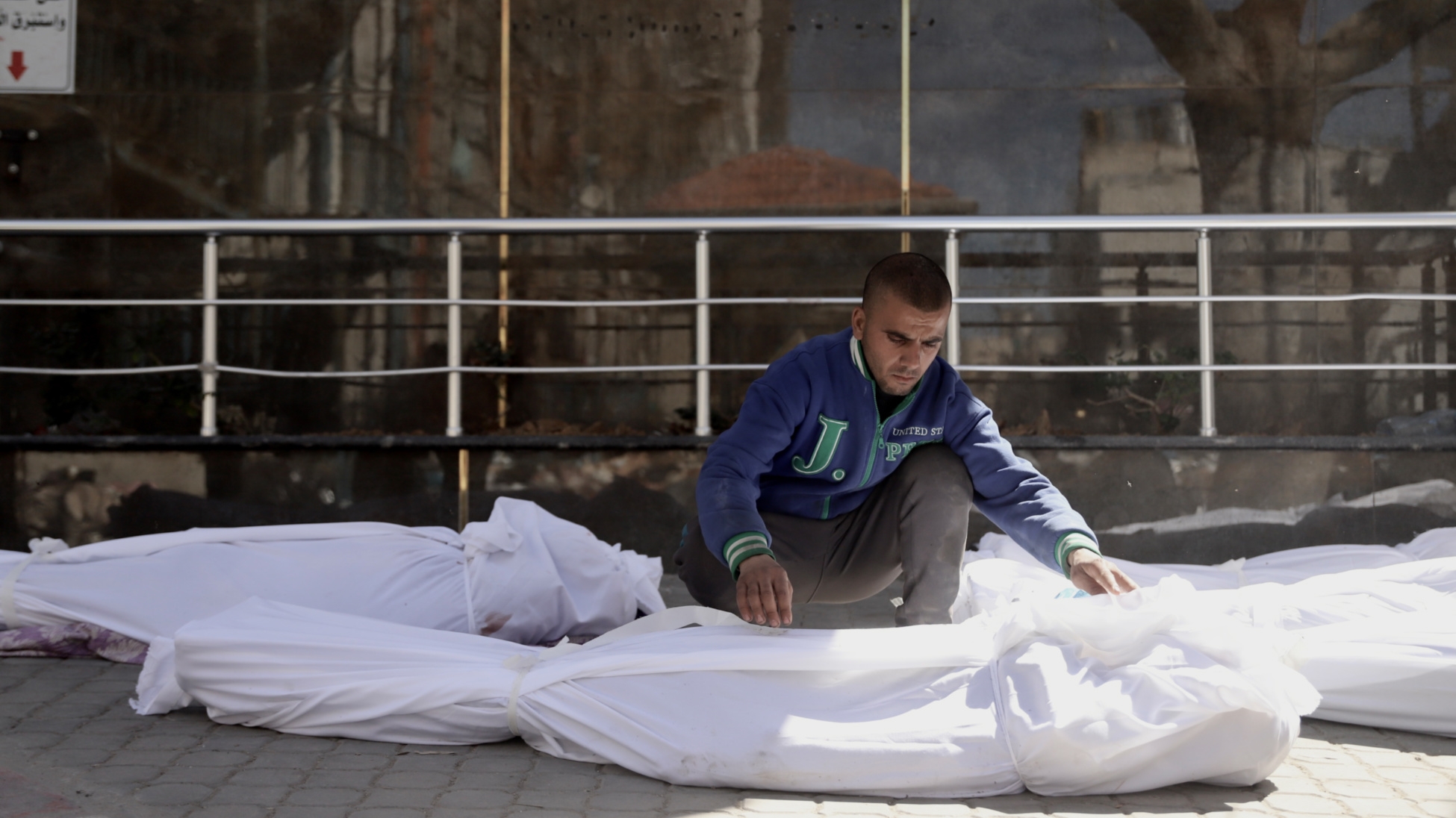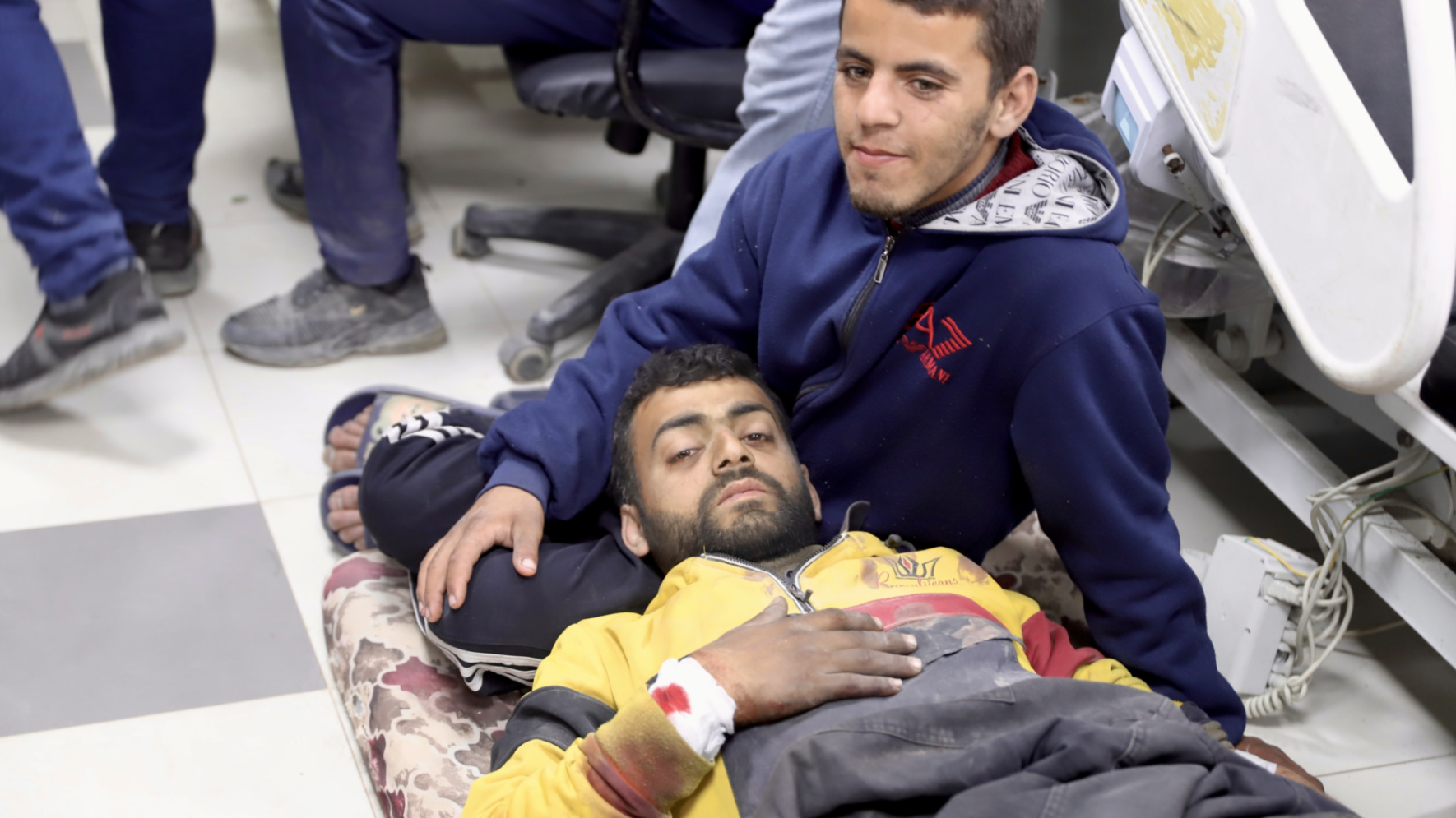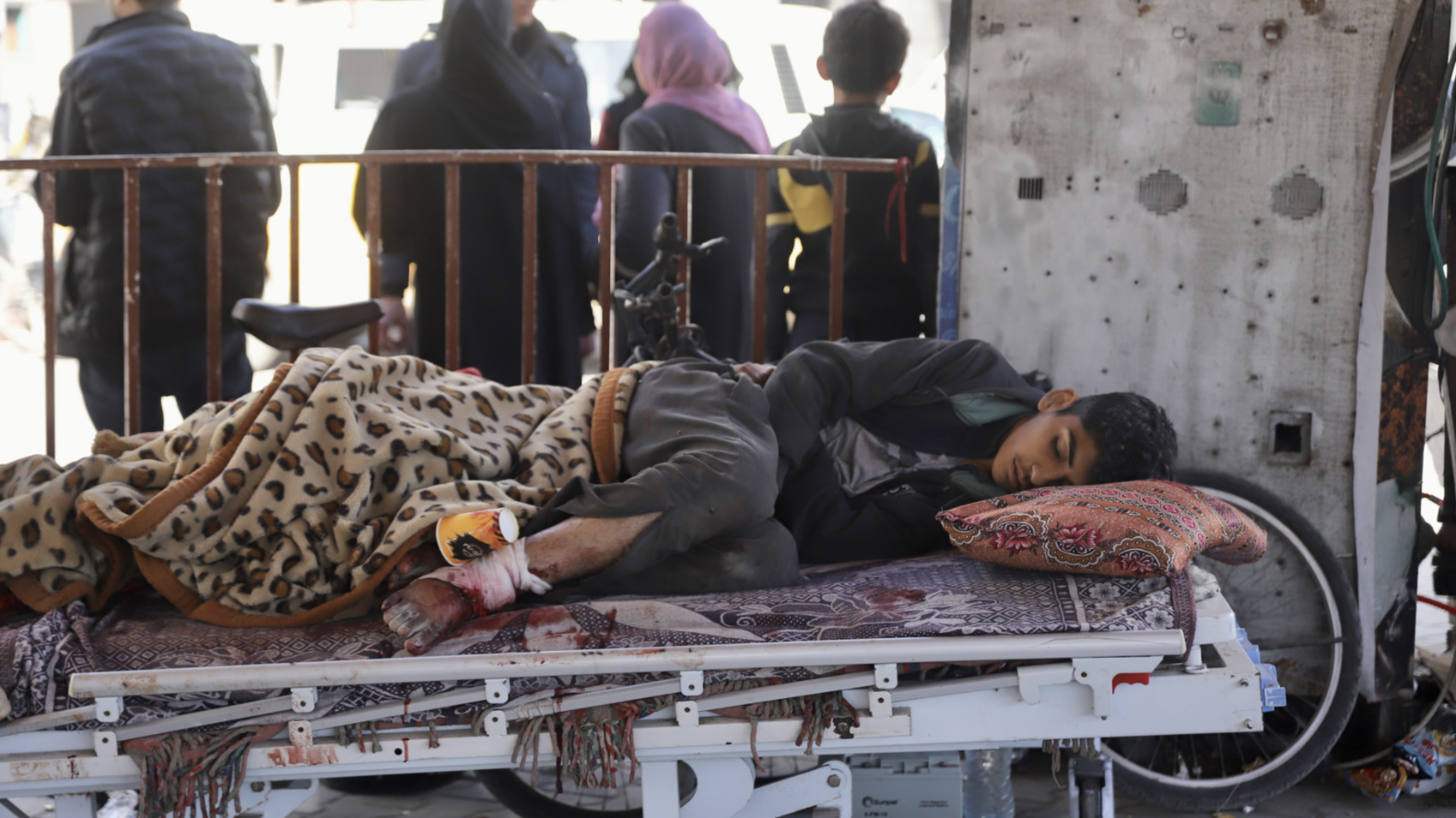War on Gaza: Israeli 'massacre' kills over 100 Palestinians seeking food in Gaza City

At least 104 Palestinians were killed and hundreds more wounded when Israeli forces fired on people at an aid convoy in Gaza City’s al-Rasheed Street on Thursday, the Palestinian health ministry said, calling the incident a "massacre".
Residents of Gaza City had gathered seeking food, with the area completely cut off from aid by Israeli forces. NGOs and UN experts have voiced fears of famine in northern Gaza and there have been reports of people, including babies, dying of hunger.
Fares Afana, head of the ambulance service at Gaza's Kamal Adwan Hospital, said medics found “dozens or hundreds” of bodies lying on the ground once they reached the scene. He said some wounded had to be carried to hospitals on donkey carts as there were not enough ambulances to take all the dead and wounded.
Stay informed with MEE's newsletters
Sign up to get the latest alerts, insights and analysis, starting with Turkey Unpacked
Hospitals in northern Gaza, most of which are out of commission because of repeated Israeli attacks, are reportedly unable to deal with the large influx of patients.
Ahmad, a 31-year-old who only gave his first name, told Middle East Eye that aid trucks reached the street at 4am, and that Israeli forces fired at people trying to reach the convoy. Ahmad was shot in the arm and the leg.
“The shooting was indiscriminate, people shot in the head, in the foot, in the stomach,” he said. “One man was martyred, then run over by the tank.”
The Israeli military accused the Palestinians of being responsible for a mass crush, saying: "residents surrounded the trucks and looted the supplies being delivered. As a result of the pushing, trampling and being run over by the trucks, dozens of Gazans were killed and injured." It released aerial footage showing desperate Palestinians gathering around the trucks.
However, alongside witness testimony, video footage clearly shows heavy gunfire during the incident. Israeli sources told AFP that troops fired at the Palestinians, with one saying the soldiers believed the crowd "posed a threat".
Kamel Abu Nahel, whose foot was ran over by one of the trucks, said: "If you want to send us aid like that, don’t send it."
“We are dying to get flour for our children," he added.
The attack comes as the Palestinian death toll in the war surpassed 30,000, according to the Palestinian health ministry.
Reacting to the attack, Oxfam said it was “appalled” by the reports.
“Israel deliberately targeting civilians after starving them is a gross violation of international humanitarian laws and our humanity,” the international aid group said. “The risk of genocide is real.”
Ammar Helo, a 30-year-old Palestinian who survived the attack, told MEE he will still go down whenever aid trucks arrive, despite the risk to his life.
“We do not have bread, we do not have flour, we have been eating animal food,” he said. Survivors told MEE even animal feed was running out in the north.
“I swear, all of Gaza is destroyed, I swear an earthquake from God would have been better.”
Middle East Eye delivers independent and unrivalled coverage and analysis of the Middle East, North Africa and beyond. To learn more about republishing this content and the associated fees, please fill out this form. More about MEE can be found here.






